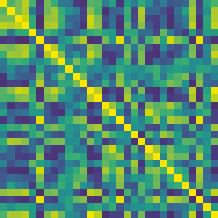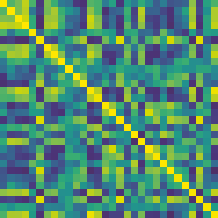Latent linear dynamical systems with Bernoulli observations provide a powerful modeling framework for identifying the temporal dynamics underlying binary time series data, which arise in a variety of contexts such as binary decision-making and discrete stochastic processes such as binned neural spike trains. Here, we develop a spectral learning method for fast, efficient fitting of Bernoulli latent linear dynamical system (LDS) models. Our approach extends traditional subspace identification methods to the Bernoulli setting via a transformation of the first and second sample moments. This results in a robust, fixed-cost estimator that avoids the hazards of local optima and the long computation time of iterative fitting procedures like the expectation-maximization (EM) algorithm. In regimes where data is limited or assumptions about the statistical structure of the data are not met, we demonstrate that the spectral estimate provides a good initialization for Laplace-EM fitting. Finally, we show that the estimator provides substantial benefits to real world settings by analyzing data from mice performing a sensory decision-making task.
翻译:Bernoulli观测的长线线性动态系统提供了一个强大的模型框架,用以确定二进制时间序列数据所依据的时间动态,这种数据产生于各种背景,例如二进制决策和双进制神经峰值列车等离散随机过程。在这里,我们开发了一种光谱学习方法,用于快速、高效地安装Bernoulli潜伏线性动态系统模型。我们的方法通过对第一和第二试样时刻的转换,将传统的子空间识别方法推广到伯南利设置。这导致产生了一个强有力、固定成本的估测器,避免了本地opima的危害,避免了像期望-最大化算法(EM)这样的迭接安装程序的长期计算时间。在数据有限或数据统计结构假设没有得到满足的制度中,我们证明光谱估计为Laplace-EM适合提供了良好的初始化。最后,我们表明,通过分析小鼠执行感测决策任务的数据,估计器为现实世界环境提供了巨大的惠益。</s>






















